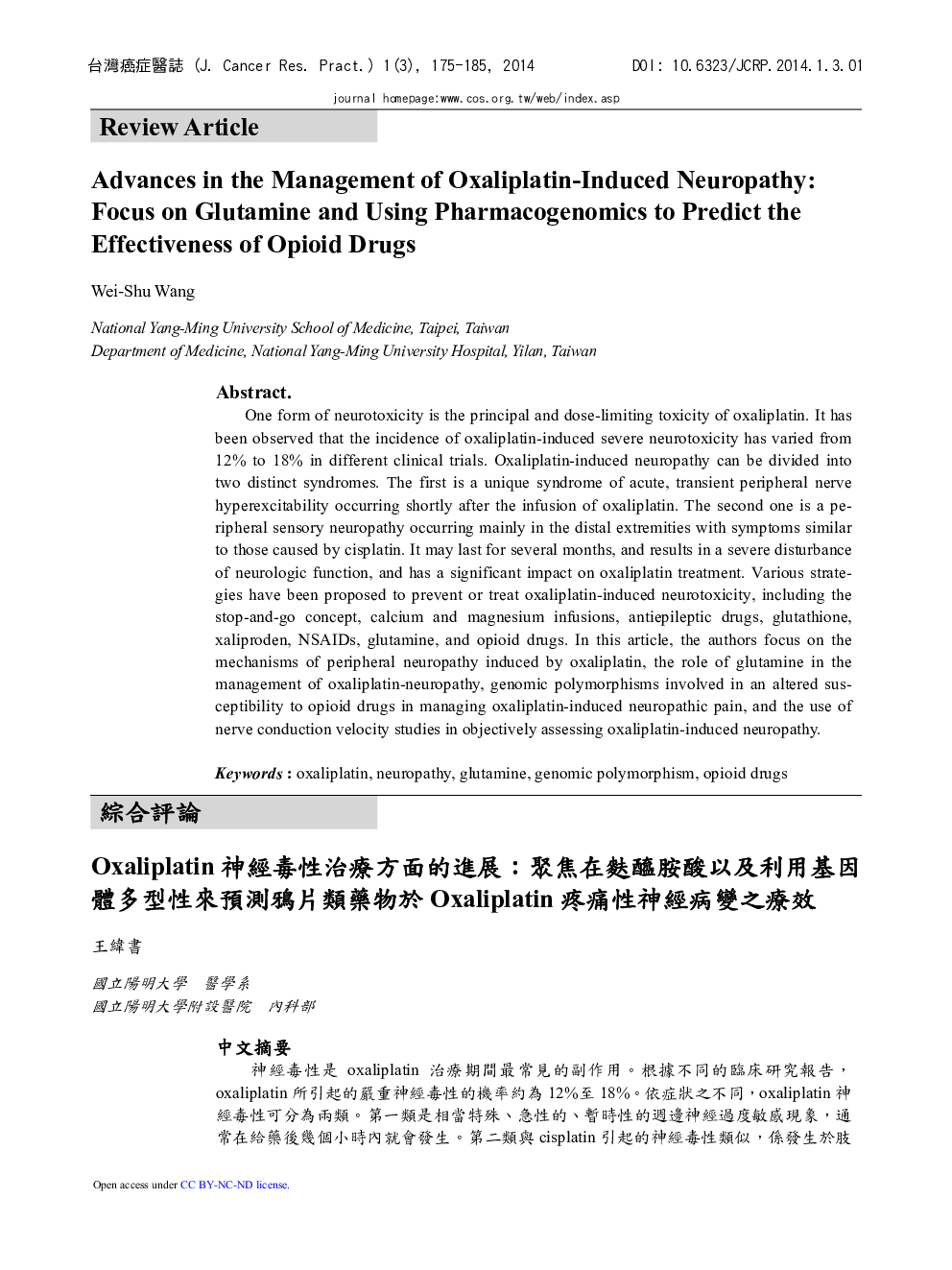| Article ID | Journal | Published Year | Pages | File Type |
|---|---|---|---|---|
| 3988822 | Journal of Cancer Research and Practice | 2014 | 11 Pages |
One form of neurotoxicity is the principal and dose-limiting toxicity of oxaliplatin. It has been observed that the incidence of oxaliplatin-induced severe neurotoxicity has varied from 12% to 18% in different clinical trials. Oxaliplatin-induced neuropathy can be divided into two distinct syndromes. The first is a unique syndrome of acute, transient peripheral nerve hyperexcitability occurring shortly after the infusion of oxaliplatin. The second one is a peripheral sensory neuropathy occurring mainly in the distal extremities with symptoms similar to those caused by cisplatin. It may last for several months, and results in a severe disturbance of neurologic function, and has a significant impact on oxaliplatin treatment. Various strategies have been proposed to prevent or treat oxaliplatin-induced neurotoxicity, including the stop-and-go concept, calcium and magnesium infusions, antiepileptic drugs, glutathione, xaliproden, NSAIDs, glutamine, and opioid drugs. In this article, the authors focus on the mechanisms of peripheral neuropathy induced by oxaliplatin, the role of glutamine in the management of oxaliplatin-neuropathy, genomic polymorphisms involved in an altered susceptibility to opioid drugs in managing oxaliplatin-induced neuropathic pain, and the use of nerve conduction velocity studies in objectively assessing oxaliplatin-induced neuropathy.
